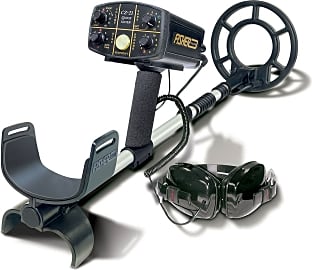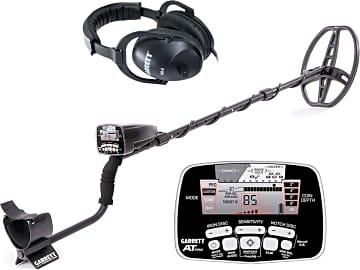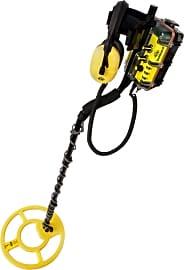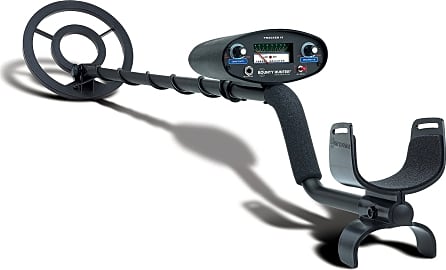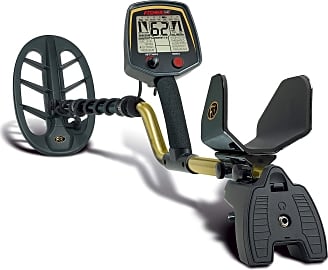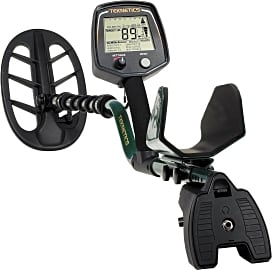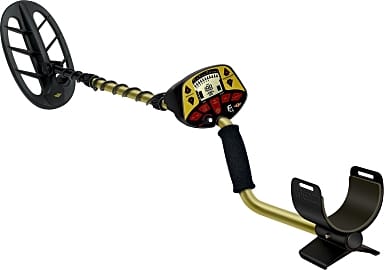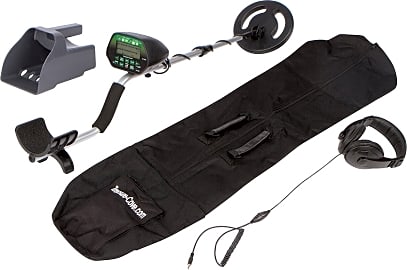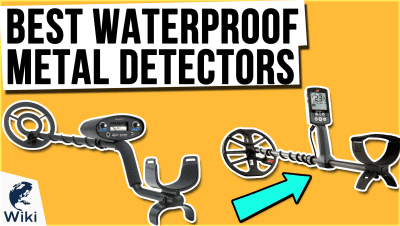The 10 Best Metal Detectors

This wiki has been updated 46 times since it was first published in May of 2015. Whether you simply want an interesting hobby that could make you a bit of cash on the side or you're a hardcore treasure hunter looking for some serious equipment, you'll find the right metal detector for your needs from among our comprehensive selection. Our picks include models suitable for most environments, from deep water diving to terrestrial beach combing, field hunting, and more. When users buy our independently chosen editorial recommendations, we may earn commissions to help fund the Wiki.
Editor's Notes
September 21, 2020:
Metal detecting can be a rewarding hobby, literally and figuratively. However, it can also be a costly one. To balance these two facets, you'll want to buy a machine that suits your usage level. For example, if you only go out treasure hunting once every month or two as something to do for a bit of fun and to pass the time, you will probably be satisfied with the Bounty Hunter Tracker TK4 and Treasure Cove TC-3020 Fortune Finder. Both of these are easy on the wallet, reasonably effective, and simple to learn to use. That being said, for not too much more money, you can get the significantly more functional Bounty Hunter Land Ranger Pro, which offers better target separation and a more informative display.
On the other end of the spectrum, we have very advanced models like the White's Spectra V3i HP, Garrett AT Pro, Fisher F75, Fisher Labs F4. These are going to be better at locating small objects that beginner models may miss, and will offer more customizability for experienced users that know how to take advantage of the various settings to make them more effective for specific applications. They are also going to be more sensitive to deeper objects.
While many of the models on this list feature waterproof coils, if your treasure hunting takes you more than a foot below the surface, you'll want to stick with a fully waterproof model, such as the Fisher CZ21-8 and White's Beachhunter 300. The former can be taken down to 250 feet, making it suitable for wreck diving, while the latter is best for shallow water snorkeling at 25 feet or less. It is worth mentioning that the Fisher CZ21-8 utilizes dual-frequency signal analysis, so it doesn't have to compromise on detection depth for small object sensitivity. Technically, the Garrett AT Pro is also submersible, but only down to 10 feet, so we don't recommend it for anything more than waist level wading.
April 05, 2019:
Thanks to its full-color display and included wireless headphones, the White's Spectra V3i HP jumped up to the top of our list, switching places with our previous top pick, which is still a great buy, but the 10-inch coil and multi-frequency performance of the V3i is just too good.
For gold hunters in particular, the White's Surfmaster is especially effective, but the Fisher Labs F4, while easy enough option for most people to use, doesn't operate in a frequency range capable of detecting gold, and it may even have a hard time with silver in certain concentrations and environments.
Elsewhere, the offering from National Geographic plummeted down to the ninth position due to quality control and durability issues stemming from both the build quality and its ability to reliably detect a variety of buried treasure.
Special Honors
Ger Detect Deep Seeker An incredibly advanced unit, the Ger Detect Deep Seekerutilizes operates in six languages and utilizes five search systems, including cavity and ionic field detection and 3D imaging. It boasts an impressive depth range down to 40 meters, making it suitable for geologic surveying, and isn't affected by the types of soil and rocks in its path. gerdetect.com
One Man's Trash Is Another's Treasure
The electric current running through the detector's transmitter coil generates an electromagnetic field.
If you spend a lot of time at the beach, then you've probably come across those people with long, stick-like instruments examining the sand. If you have any interest in treasure hunting, then you may consider yourself among the beachcomber elite looking for the next big find by the sea. If you've ever been stopped by airport security, then you're probably aware of the use of metal detectors in at least some form. Regardless of the situation, the ability to detect metal is an important function in society from a hobby, research, and safety perspective.
Metal detectors are most useful for finding metallic inclusions hidden inside objects made from other materials and for finding objects buried deep underground that cannot be detected with the naked eye. A typical metal detector is a lightweight, handheld device with several parts that include a stabilizer, control box, shaft, and a search coil. Most detectors also have a headphone jack for listening to the device's audible beep alerts when it finds something. The stabilizer keeps the detector steady as you sweep its search coil back and forth over the ground.
The control box contains all of the detector's internal circuitry, controls, its speaker, and microprocessor. The search coil detects the metal and it is connected to both the shaft and control box. The shaft is often adjustable to accommodate different user heights. Once the unit is powered on, the user simply waves the search coil back and forth over the ground. When the coil passes over a target object, an audible signal occurs. The closer the detector is to the piece of target metal, the higher the signal tone will be in the speaker or headphones.
While metal detectors can utilize several types of technology to operate, the most popular method is very low frequency (VLF) technology. A metal detector using very low frequency leverages both a transmitter and receiver coil. The transmitter contains a coil of electric wire through which a current is sent in one direction and then another. This directional change occurs thousands of times per second. The number of times a current switches directions in one second determines the metal detector's frequency. The receiver consists of another coil of electric wire that acts as an antenna used to both pick up and amplify frequencies originating from objects buried underground. The electric current running through the detector's transmitter coil generates an electromagnetic field.
Whenever the current changes direction, so does the polarity of the magnetic field. The magnetic field from the transmitter coil continues to push down into the ground and back out again. While this occurs, the field interacts with any conductive objects it encounters underground, allowing those objects to generate their own magnetic fields. When underground objects emit these magnetic fields, the receiver coil picks up the interference they produce and transmits it directly to the detector's audio system where it is picked up by the user (through a speaker or headphones).
A Full Range Of Choice
Context matters in one's decision to invest in a metal detector. From an archaeological perspective, the device allows researchers to find and preserve historical artifacts at sites that would otherwise be extremely difficult to detect. That said, if you're a scientist with a passion for history, then finding the most cutting-edge metal detector will be important.
Context matters in one's decision to invest in a metal detector.
Some of the best detectors include high-definition color screens and the ability to pick up multiple frequencies. If one prefers the freedom of movement without extra cords, then a metal detector with the ability to interface with wireless headphones is another important feature to consider.
Some metal detectors are even submersible up to one hundred feet for underwater use, so if you snorkel or consider yourself a recreational diver and wish to go treasure hunting in the ocean, durability and a waterproof design will come in handy.
The larger the search coil, the easier it can be to find what you're looking for. Many detectors offer search coils between eight and twelve inches in diameter, which allows you to cover a large search area more quickly.
A Brief History Of Metal Detectors
The invention and popularity of the metal detector took shape during the latter part of the nineteenth century around the same time major strides were being made in the field of electrical engineering, thanks to figures like Alexander Graham Bell and Thomas Edison among others. By the mid-1800s, scientists, scholars, and gold miners began experimenting with machines that could locate metal underground. In 1874, a Parisian inventor named Gustave Trouvé invented a handheld device for locating and extracting metal objects (e.g. bullets) from patients.
While Bell's metal detector functioned properly, it was unable to locate the lodged bullet due to the interference caused by the metal coil springs in Garfield's bed.
Inspired by Gustave Trouvé, Alexander Graham Bell devised one of the first dedicated uses of a metal detector in his efforts to locate the bullet responsible for killing United States' twentieth President James A. Garfield in Washington D.C. in 1881. Garfield was shot in the back by American writer and lawyer Charles J. Guiteau. While Bell's metal detector functioned properly, it was unable to locate the lodged bullet due to the interference caused by the metal coil springs in Garfield's bed. Although Bell's invention could not save Garfield, his invention became the prototype from which all future metal detectors would be constructed.
The first metal detectors of the twentieth century were large, difficult to use, and operated through the use of vacuum tubes. Many of these detectors were later used in Europe to discover undetonated bombs and landmines after World War One and Two.
In 1925, Gerhard Fisher was granted a patent for the first portable metal detector following his discovery that radio beams were being distorted by local ore-bearing rocks while studying navigation systems. Fisher sold his first device to the general public in 1931. Between the 1950s and present day, detector technology has continued to be refined and improved, thanks largely to detector enthusiasts, hobbyists, and scientists adding the use of transistors, discriminators, improved search coils, and wireless technology to make metal detection easier than ever before.



